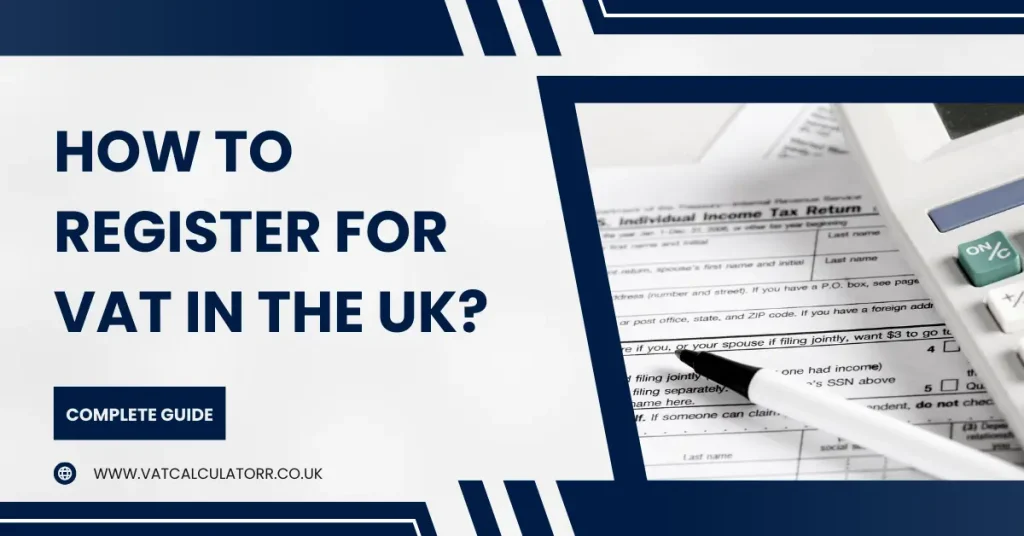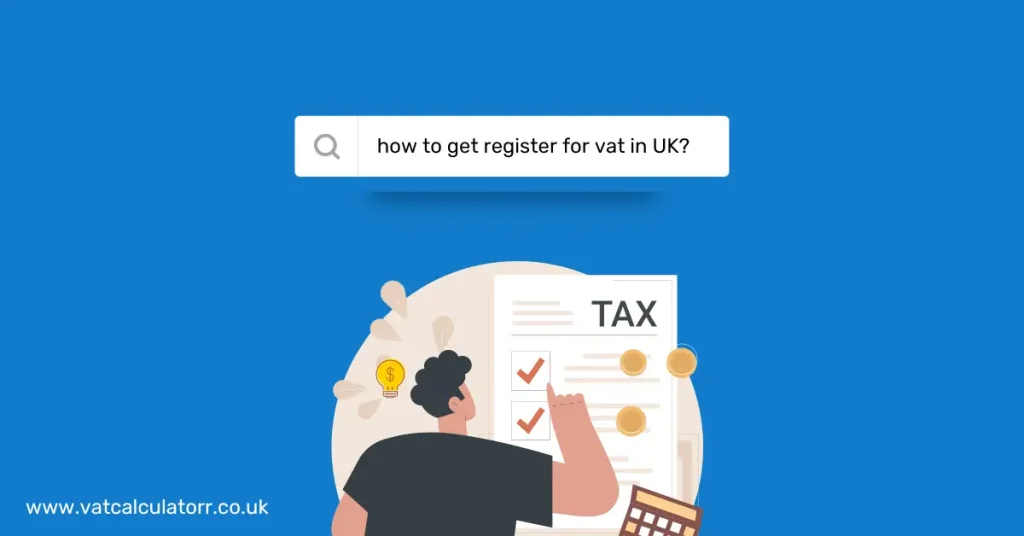Register for VAT
To register for VAT in the UK, you should set up a Government Gateway account, gather your business and tax details, and then apply through HMRC’s online VAT registration portal or by sending in form VAT1 by post. Be ready with your company number, bank details, turnover data, and any relevant tax references.
When Do You Have to Register for VAT?
You must register for VAT if your taxable turnover is more than £90,000 in the last 12 months or expected to exceed it in the next 30 days.
You must also register if:
- You are based outside the UK but supply goods or services in the UK
- You operate a business outside the UK and make taxable UK sales

Can You Register for VAT Voluntarily?
Yes. Businesses with turnover below £90,000 can register for VAT voluntarily. Voluntary registration is allowed if VAT rules apply to the goods or services supplied.
The VAT Calculator supports calculations for newly registered businesses.
What Do You Need to Register for VAT?
You need a Government Gateway account, business information, and personal tax records.
Required documents depend on your business type.
For a Limited Company:
- Company registration number
- Business bank account details
- Unique Taxpayer Reference (UTR)
- Annual turnover data
- PAYE, Corporation Tax, and Self-Assessment references
For an Individual or Partnership:
- National Insurance number
- Passport or driving licence
- Bank account details
- UTR (if available)
- Annual turnover data
How to Register for VAT in the UK?
You can register for VAT online using HMRC’s digital portal or by post using VAT1 or VAT7 forms.
Online Registration Steps:
- Prepare company registration number, UTR, and turnover data
- Access the HMRC VAT portal
- Log in using your Government Gateway account
- Begin the VAT registration form
- Enter full business and bank details
- Confirm VAT-related items such as exemptions or schemes
- Submit the application
HMRC will review and assign a VAT registration number if approved.
Postal Registration Steps:
- Download the VAT registration form from HMRC
- Fill in business details and turnover
- Attach business registration and ID copies
- Post documents to HMRC
- Receive VAT number and certificate by mail
VAT charges cannot be added to invoices until registration is confirmed.pproved. Make sure you have all the needed information at hand to speed up the process.
What Happens After Registration?
You must log in to your VAT account to manage returns, payments, and business changes.
Key actions include:
- Confirming VAT return dates
- Setting up Direct Debit for payments
- Viewing outstanding amounts
- Managing penalties
- Reporting business changes
- Ending VAT registration if required
Agents submit VAT returns for businesses that delegate filing tasks.
What if VAT Registration is Late?
If you register late, VAT still applies from the date you pass the threshold. You may face a penalty, which can be appealed through HMRC.
Additional features in your account include:
- Submitting EC Sales List (if trading from Northern Ireland)
- Reverse Charge Sales List (RCSL) submissions
- EU VAT refund claims
- Vehicle import notifications (NOVA)
- VAT MOSS updates for digital services

How to Update VAT Registration Details?
You can change details using your online VAT account or by post with form VAT484.
Changes allowed:
- Business name, address, or trading name
- Agent or accountant details
- Partnership members or their home addresses
- Bank details
- Overseas business contact changes
- Business ownership transfer
HMRC must be informed within 30 days. Delays may result in penalties.
Form VAT7 allows cancellation of VAT registration through post.
When Can You Cancel VAT Registration?
You can cancel VAT registration if your business stops or turnover falls below £88,000.
You may cancel if:
- Trading stops
- You leave a VAT group
- Sales are no longer VAT-taxable
- Sales are mostly zero-rated and you apply for exemption
Use form VAT7 by post or apply through your online VAT account. HMRC usually confirms cancellation within 3 weeks.
After cancellation:
- Submit a final VAT return for the closing period
- Retain VAT records for at least 6 years
More tax guidance is available on the VAT Flat Rate Scheme and UK VAT Calculator.
When your taxable turnover exceeds £90,000.
Fill and submit form VAT1 through HMRC.
Complete the online VAT form using HMRC’s VAT portal.
HMRC is Her Majesty’s Revenue and Customs, the UK tax authority.
Submit the VAT form on behalf of clients through the HMRC portal.
Use the VAT1 form with your business and identity documents.
£90,000 in taxable turnover within 12 months.
A unique ID from HMRC assigned to VAT-registered businesses.
GB123456789 is a standard UK VAT number format.